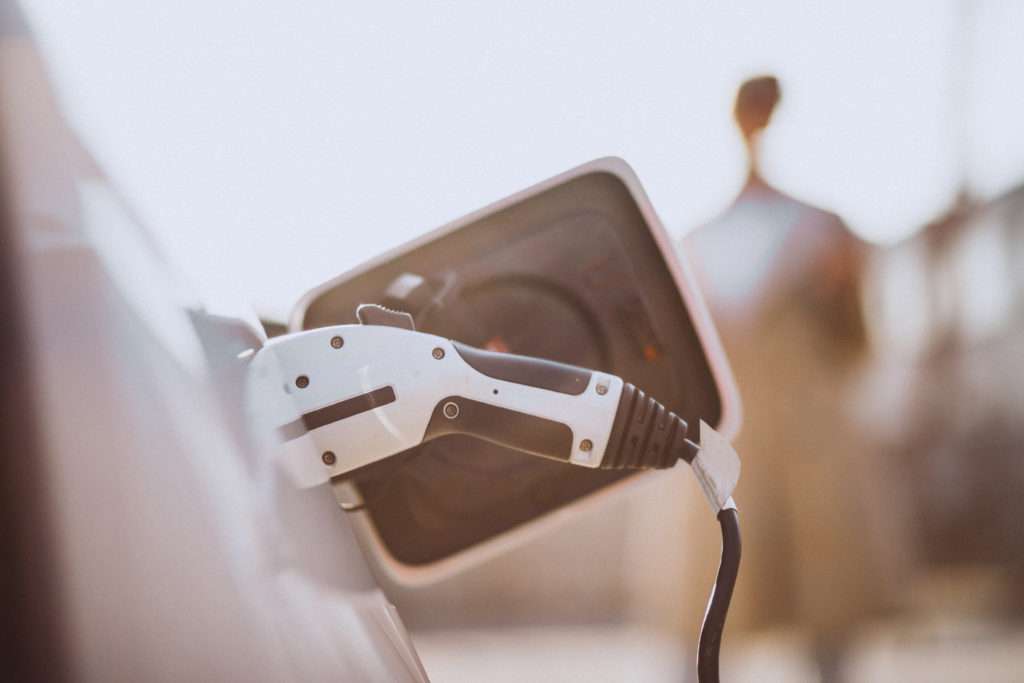What does sustainable transportation really mean, and is it actually attainable? Most people likely think of the environment and climate issues— and while that is a major component, there’s a lot more to it than that. Economic, technological, and social impacts are also key parts of this issue. Sustainability is one of the most complex, multi-faceted issues we’re facing today.
For our July Connections session, we met with T.J. Doyle, Vice President of Marketing and Communications at the American Public Transportation Association (APTA), John Eichberger, Executive Director of the Fuels Institute, and Jesse Marcel, CEO and Chief Designer at Airborne Motorworks. All three shared different perspectives to touch on the policy, innovation, and infrastructure needed to create a sustainable transportation system that benefits us, our communities, and our organizations.
Sustainability Requires Systems Thinking
As we already noted, the first thing most of us think of when considering sustainability in any context is minimizing the impact on the environment. We associate it with altering the course of climate change and lowering our carbon footprint.
It is equally important to be thinking of the economic and societal factors of sustainability. Addressing it requires a systemic view. We can’t expect to deploy solutions that people cannot afford or do not want to buy and realize the outcomes we want. Similarly, promising new technology will make no difference if people cannot use or access it in daily living.
Americans seem to get this intuitively. Asked directly, 53% consider economic factors a top priority for local sustainability planning. Only 47% put ecological factors at the top for such planning considerations. Even social considerations such as safety and access are considered top priority by slightly more Americans at 51% today.
The complexity of this issue requires thinking about the complete system, starting with public transportation and how we can rethink it for the future.
Related: What does the future of travel look like?

The State of Sustainable Public Transportation
T.J. Doyle is the Vice President of Marketing and Communications at the American Public Transportation Association, a nonprofit that represents all modes of public transportation, including bus, paratransit, light rail, commuter rail, subways, waterborne services, and intercity and high-speed passenger rail.
“The conversation around sustainability — be it environmental, economic, or societal sustainability, is near and dear to us as an industry,” Doyle said. “Public transportation has been an early adopter of sustainable practices and clean technologies…With the transportation sector generating the largest share of greenhouse gas emissions, we as an industry feel we have an obligation and an opportunity to address sustainability in a meaningful way, in a measurable way that resonates with communities around the nation and around the world.”
In addition to deploying autonomous vehicles, using cleaner fuel and energy sources, and having carbon-neutral operating practices, sustainable public transportation also needs to be accessible, reliable, and equitable. This means reimagining systems — from big cities to rural areas — to make sure that transportation is going where there are communities in need are and bringing them into the fold in ways that have never been accessible or commutable before. It needs to provide opportunity and flexibility, so that as many people as possible can use public transit.
“We think that public transportation can provide the essential elements for progress,” Doyle said. “This is what we’ve been focused on, obviously over the course of many years and many decades — but with this new investment and the administration’s focus on infrastructure, the focus on public transportation, the focus on climate and environments, we’re trying to harness that opportunity and really, really make huge inroads.”
Alternative Fuel and Energy Solutions
John Eichberger is the Executive Director of the Fuels Institute, a non-advocacy research organization dedicated to studying transportation energy. At the Institute they consider fuel to be any type of energy used to power a vehicle, and their research encompasses a breadth of issues affecting the vehicles and fuels markets.
Eichberger stressed the importance of having options and realizing that decarbonization does not solely mean electrification. While electric vehicles are great — and would benefit the environment in some ways — they’re not the only solution. If we limit ourselves to one solution, then we might miss other sustainable answers that also help prioritize the needs of the people.
Our recent research shows only 4 in 10 Americans either will have or expect to have purchased or leased a hybrid or electric vehicle in three years from now. The demand is not there, and the infrastructure is not in place to support a pure electric play at scale. The irresponsible messaging on electric vehicles, however, is the talk about is asthat it is the (one and only) solution. It is not.
“We have got to make sure that we do not compromise individual people’s access to affordable, reliable transportation,” Eichberger said. “If you think about disadvantaged communities, rural or lower income communities, the only way they can improve their livelihood and expand their opportunities is to be able to move around. We must make sure that the needs of people are being considered at the same level, or even a higher level, than the needs of the environment. You hear some people say we need to reduce carbon at all costs. Well, that is the most, I believe, insensitive and uninformed approach… you’re going to put people who are in lower economic situations in a really difficult position.”
To make meaningful change, we must look at the entire life-cycle environmental analysis — from mining materials to manufacturer operations to end-of-life recycling. There is no such thing as a zero emissions vehicle when we account for the entire life-cycle of manufacturing an electric vehicle, which means we need to be honest about what we’re trying to do and our options.
“Electrification is part of a decarbonization strategy, but if we keep our focus on reducing carbon, getting down to a low CO2 equivalent emissions profile and transportation, now we can look at all of our options,” Eichberger said. “We can customize solutions that accelerate our decarbonization path at the lowest cost and in the most consumer friendly mindset.”
Policy and regulations are also big hurdles in the arena of sustainability. Liquid fuel options, like the E15 ethanol blend — a less carbon intensive fuel — face challenges in regulation. Automated vehicles face challenges in insurance policies. The options are there, it just might take a while for them to become readily available alternatives.

The Future of Sustainable Technology
Jesse Marcel is the founder, CEO and Chief Designer at Airborne Motorworks, a company working to commercialize transformational propulsion and industrial motor technology into the real world. Their focus is on flight electrification applications, (such as drones), and on industrial applications (such as commercial air handlers, electric power generation, wind, and hydro power), to create safe, compact, and efficient alternative vehicle solutions. Practical applications include delivery drones, rescue and first responder platforms, and air ambulances, which can be used to create greener civilian and military environments.
In terms of the technology needed to create more sustainable transportation — while flying cars from the Jetsons might still be a way off (side note: did any of you remember that George Jetson’s birthday in the cartoon series was July 31, 2022? Maybe we’re not that far off.), there are other energy options to explore. Localized power generation to reduce losses simply through extended distribution channels. More efficient wind turbines. Alternative battery sources. We have to be able to generate, utilize and leverage energy better.
“We have to create functional technology, and it can’t be on the feel-good side,” Marcel said. “I kind of feel like a lot of what we’re doing is on the feel-good side. It’s not on the side of really what it takes to get from A to Z…And I think that’s part of the trick, too, is that we’re trying to shoehorn technology into what we want. It’s not the best method — technology has to catch up, and it still has quite a way to go. But I think technology is getting there, and these problems we face, technology is the answer.”
How do we inspire true sustainable change?
For the goal of sustainability to feel more attainable for us all, we must be optimistic in the messaging of the issue. Being pessimistic will only scare people away from even trying.
“It’s got to be aspirational, uplifting,” Eichberger said. “It can’t be fear mongering. It has to be, ‘Hey, these are technologies that improve the convenience of your life, make you more productive, more satisfied, but also benefit the environment. That’s a win-win.’ And if you start thinking in that respect, you get more people bought in.”
Most important principles for anyone wanting to make actual change in sustainability
- Resilience: If something doesn’t work, that’s okay — try something new.
- Access: Increase access to sustainable options — electric vehicles, different liquid fuel sources, or public transportation.
- Equity: Increase opportunities and access for all, but especially for lower-income or rural communities who may be at more of a disadvantage.
- Optionality: Remember that we have options — there can be more than one answer to sustainability.
- Collaboration: Don’t forget the importance of working together for the greater good.
- Human-centric: Keep sustainability built around the needs of the people.
